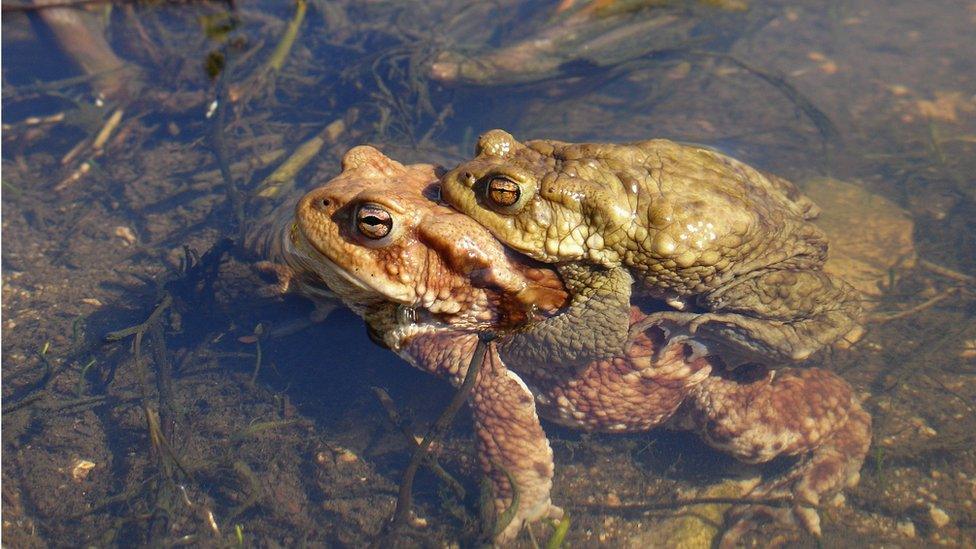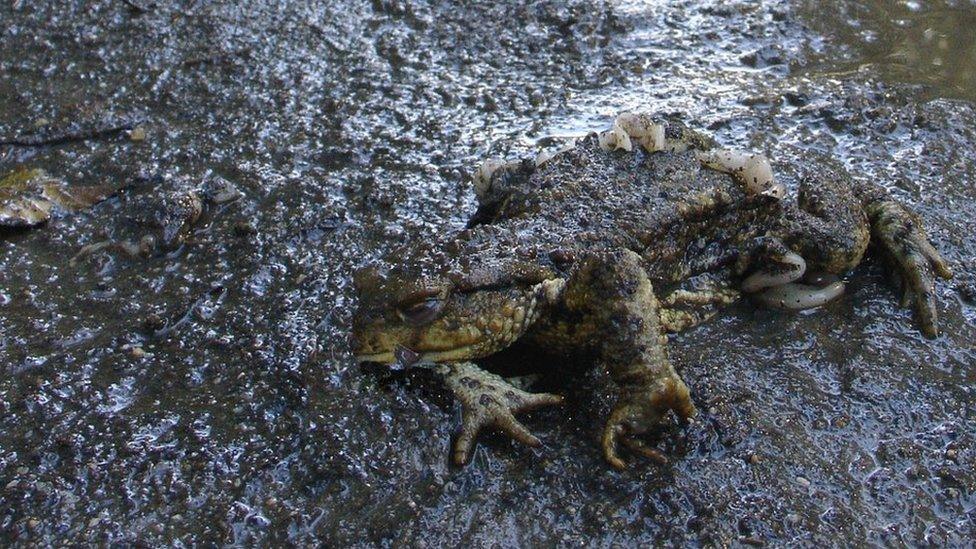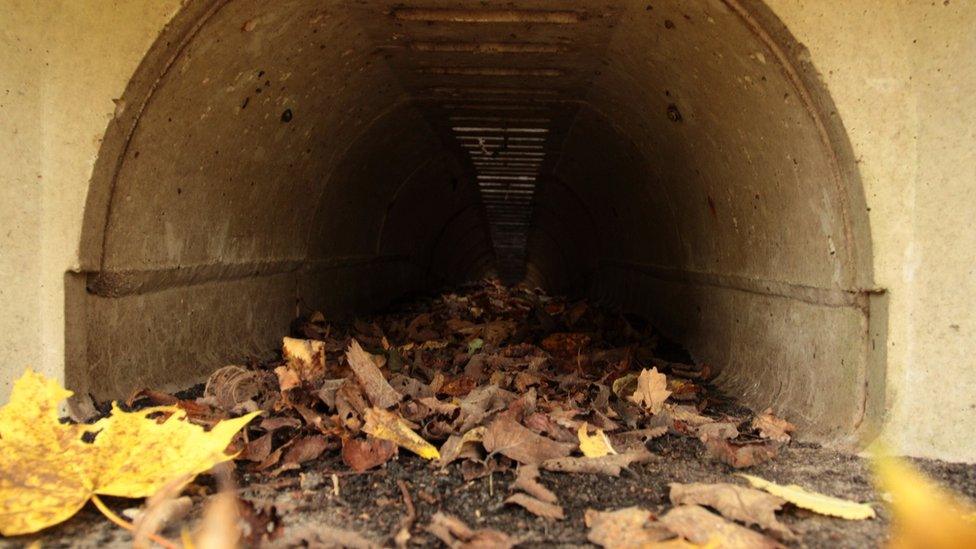Toad numbers fall by two-thirds in 30 years
- Published

Toads are important pest controllers, eating slugs, snails and insects
The common toad is in decline across much of the UK and needs better protection, say conservationists.
Data from toad patrols - volunteers who move toads across busy roads - shows the toad population has fallen by more than two-thirds since the 1980s.
Once common in the British countryside, the amphibian is now on the brink of qualifying for protection as a vulnerable species, a study suggests.
Factors in its loss include urban sprawl and habitat fragmentation.
Silviu Petrovan, from the UK charity Froglife, said the information came from Toads on Roads - volunteer patrols established in the early 1970s to move toads over busy roads.
"Our data shows that hundreds of thousands of toads have been lost from the UK countryside in the past 30 years," he said.
Mixed picture
The south-east of England has suffered the greatest declines in the common toad (Bufo bufo), according to the research.
Numbers have also fallen in Wales and the south-west and west of England in the past, but have stabilised in the last decade.
Central and northern areas of England as well as Scotland have also experienced declines.
In the east of England, numbers have recovered since 2005, but not enough to reverse previous losses.

Traffic on busy roads is a threat to toads

Tunnels can prevent deaths from traffic
Dr Petrovan said that conservation tends to be focussed on rare species, meaning more common species can get overlooked.
"We know now that a lot of the common butterfly species for instance have suffered really important declines and a lot of the farmland birds," he said.
"We didn't actually have enough data about common amphibians and this is why this data set is particularly interesting because it's showing that common amphibians such as common toads have suffered quite profoundly in the last three decades."
Downward trend
Froglife is calling for better protection measures for amphibians, including well designed wetland and ponds, and more toad tunnels under roads.
Paul Edgar, senior amphibian and reptile specialist from government conservation agency Natural England, said the common toad was "sadly on a downward trend".
"This is partly because of habitat fragmentation and so understanding and mitigating the impacts of this issue is vital," he said.
"We need to continue to build good quality habitat links across the wider landscape if we are to offer opportunities for this species to recover."
A similar decline in the common toad was found in Switzerland.
Dr Benedikt Schmidt from the University of Zurich said it was bad news that a once common species was becoming rare.
"We don't know what is causing the decline," he said.
"We believe it is a general deterioration of environmental quality - it could be land use, it could be mortality on the roads and it could be (in places where they are not protected) the use of pesticides."
The research is published in the journal, Public Library of Science ONE.
Follow Helen on Twitter @hbriggs., external